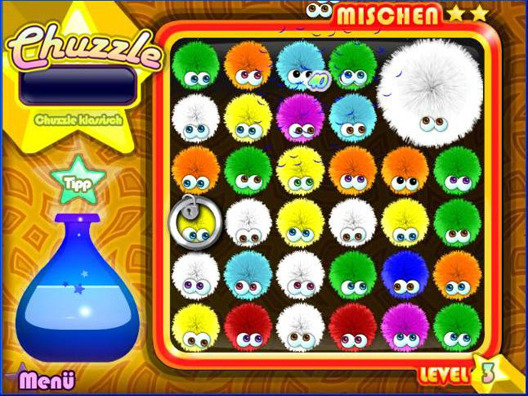What do you think?
Rate this book


952 pages, Kindle Edition
First published January 1, 1844
Perhaps there never was a more moral man than Mr Pecksniff, especially in his conversation and correspondence. It was once said of him by a homely admirer, that he had a Fortunatus’s purse of good sentiments in his inside. In this particular he was like the girl in the fairy tale, except that if they were not actual diamonds which fell from his lips, they were the very brightest paste, and shone prodigiously. He was a most exemplary man; fuller of virtuous precept than a copy book. Some people likened him to a direction-post, which is always telling the way to a place, and never goes there; but these were his enemies, the shadows cast by his brightness; that was all.
‘I say I am in love. I am in love with one of the most beautiful girls the sun ever shone upon. But she is wholly and entirely dependent upon the pleasure of my grandfather; and if he were to know that she favoured my passion, she would lose her home and everything she possesses in the world. There is nothing very selfish in that love, I think?’
These gentry were much opposed to steam and all new-fangled ways, and held ballooning to be sinful, and deplored the degeneracy of the times…
‘Why, I was a-thinking, sir,’ returned Mark, ‘that if I was a painter and was called upon to paint the American Eagle, how should I do it?’
‘Paint it as like an Eagle as you could, I suppose.’
‘No,’ said Mark. ‘That wouldn’t do for me, sir. I should want to draw it like a Bat, for its short-sightedness; like a Bantam, for its bragging; like a Magpie, for its honesty; like a Peacock, for its vanity; like a ostrich, for its putting its head in the mud, and thinking nobody sees it…’
Did no dog howl, and strive to break its rattling chain, that it might tear him; no burrowing rat, scenting the work he had in hand, essay to gnaw a passage after him, that it might hold a greedy revel at the feast of his providing? When he looked back, across his shoulder, was it to see if his quick footsteps still fell dry upon the dusty pavement, or were already moist and clogged with the red mire that stained the naked feet of Cain!

`What an extraordinary people you are!' cried Martin. `Are Mr. Chollop and the class he represents, an Institution here? Are pistols with revolving barrels, sword-sticks, bowie-knives, and such things, Institutions on which you pride yourselves? Are bloody duels, brutal combats, savage assaults, shooting down and stabbing in the streets, your Institutions! Why, I shall hear next that Dishonour and Fraud are among the Institutions of the great republic!'
”'If Mr George Chuzzlewit has anything to say to me,' interposed the strong-minded woman, sternly, 'I beg him to speak out like a man; and not to look at me and my daughters as if he could eat us.'
'As to looking, I have heard it said, Mrs Ned,' returned Mr George, angrily, 'that a cat is free to contemplate a monarch; and therefore I hope I have some right, having been born a member of this family, to look at a person who only came into it by marriage. As to eating, I beg to say, whatever bitterness your jealousies and disappointed expectations may suggest to you, that I am not a cannibal, ma'am.'
'I don't know that!' cried the strong-minded woman.
'At all events, if I was a cannibal,' said Mr George Chuzzlewit, greatly stimulated by this retort, 'I think it would occur to me that a lady who had outlived three husbands, and suffered so very little from their loss, must be most uncommonly tough.'”
”'Why, goodness me!' she said, 'Mrs Chuzzlewit! To think as I should see beneath this blessed 'ouse, which well I know it, Miss Pecksniff, my sweet young lady, to be a 'ouse as there is not a many like, worse luck, and wishin' it were not so, which then this tearful walley would be changed into a flowerin' guardian, Mr Chuffey; to think as I should see beneath this indiwidgle roof, identically comin', Mr Pinch (I take the liberty, though almost unbeknown), and do assure you of it, sir, the smilinest and sweetest face as ever, Mrs Chuzzlewit, I see exceptin' yourn, my dear good lady, and your good lady's too, sir, Mr Moddle, if I may make so bold as speak so plain of what is plain enough to them as needn't look through millstones, Mrs Todgers, to find out wot is wrote upon the wall behind. Which no offence is meant, ladies and gentlemen; none bein' took, I hope. To think as I should see that smilinest and sweetest face which me and another friend of mine, took notice of among the packages down London Bridge, in this promiscous place, is a surprige in-deed!’”

"What is exaggeration to one class of minds and perceptions, is plain truth to another. That which is commonly called long-sight, perceives in a prospect innumerable features and bearings non-existent to a short-sighted person. I sometimes ask myself whether there may occasionally be a difference of this kind between some writers and some readers; whether it is always the writer who colours highly, or whether it is now and then the reader whose eye for colour is a little dull?"------ CHARLES DICKENS (PREFACE)